Experience nature
The countryside in Færder National Park is almost unique in the world, with its smoothly-polished rock slopes, islands and skerries, but also sheltered glens and small canyons where warmth-loving plants and trees have established themselves. The area is home to great biodiversity, including plants and insects that are hardly found anywhere else in Norway.
It is nature itself that has created this paradise, but the landscape has also been shaped by human activity over the millennia. Everywhere you can find traces of the people who have lived here, fishers, basic agriculture, shipping and shipwrecks, war and depopulation.
Landscape and geology
In the skerries we find two different rocks. Farther in the north, Fjærskjær, Ormøy, and Tørfest stand out in that the bedrock is formed by rhombic porphyry lava that lies in almost horizontal layers. In the rest of the national park, the bedrock is dominated by various varieties of larvikite, formed for approx. 300 million years ago. Tønsbergitt is a reddish-brown variety that is found at Langskjærene, most of Bolærne and Ramsholmen.
The coastal landscape is the result of at least 40 ice ages over the past 2.5 million years. As it travelled south, the ice polished the rock and created scour lines and the characteristic “sheep backs” with gentler slopes on the north side. The area is also rich in other geological formations such as smooth rock slopes, chatter marks, moraines and pot holes. At the north end of Sandø there is a big area of wind-blown sand, and there is an enormous pot hole on the south-west side of Kløvningen.
Photo: Erik Bleken
The sea
The vast majority of Færder National Park consists of sea and sea bed. This varied underwater landscape includes a great diversity of marine habitats: kelp forests, soft-bottom habitats, shell sand areas and eelgrass meadows. The national park’s abundant and diverse flora and fauna is dependent on all of these important habitats.
Photo: Marcus Wernicke
Rare species
The area around Oslo Fjord has the most species in Norway, and the coast around Vestfold is among the richest. More than 300 rare or endangered plant and animal species have been found, and we are still finding more. The islands of Sandø, Bolærne, Østre Bustein and Moutmarka are particularly important areas for biodiversity.
More than 900 different butterfly species have been registered at Bolærne. Several of them are on the "red list" and are considered rare or endangered.
Photo: Gul hornvalmue. Bjarke Anderson.
Plants
Around 40 rare plant species are preserved in the national park. Examples of this are Kammarimjelle, gul hornvalmue, kjempestarr and jordbærkløver. In 2016, the plant sandtimotei was found on Vestre Bustein for the first time in Norway in over 100 years.
About 100 plant species in the national park are relatives of our food plants, such as strandkål, villeple, and sandtimotei. "The wild relatives" have lived out in the wild and have adapted to the major climate change we are experiencing today. A number of food plants do not have this robustness and struggle to adapt to large changes in temperature, new diseases and pests.
The wild relatives from Færder National Park can be of great economic importance in the future by delivering more robust genes to our food plants and thus making them more adapted to climate change.
Photo: Bjørn Strandli
Wildlife
There are lots of exciting animals in the national park. The seabirds maybe one of the first you see, but if you go for a walk on the beach you can also see many rare butterflies. Underwater there is a buzzing life of large and small, and if you are lucky you can see smaller whales or seals dancing in the water's crust. The wild mink is a small predator that does great damage in the national park, but in recent years work has made the outer islands free of mink.
Photo: Roy Fjelldal
CULTURAL LANDSCAPES
Færder National Park is a cultural landscape that has been created by humans having lived in and of the nature for hundreds of years. This separates the area from many other Norwegian national parks that have more wilderness. In the Færder National Park, we find burial ruins from the Bronze Age, remains of buildings, stone fences, trails, shipwrecks, defense facilities, lighthouses, and war memorials.
Many of the plants that grow here thrive in areas where there's human activity. Meadows with a varied flora of flowers are an example of this. Other types of habitat that are also found in cultural landscapes are beach meadows, garden land, and natural pasture.
If nature grows untouched and pets stop to pasture, some of the habitats will disappear, along with the species that live there. The cultural landscape must be maintained. This work is done by landowners, public administrations, interest groups, and volunteers. Grazing animals are an essential part of the maintenance, and there are sheep and cattle grazing in several places in the national park.
Færder National Park is one of 22 selected cultural landscapes in Norway. These areas represent particularly valuable historical cultural landscapes. Public grants are provided for the maintenance and restoration of these areas.
Photo: Jørgen Kirsebom
CULTURAL
Hunting and trapping have probably been going on in Færder National Park since the Stone Age, but the visible evidence first appeared 3,000 years ago with cairns from the Bronze Age. The Russian prison camp and the homemaker sites at Mellom Bolæren are examples of recent cultural monuments worth preserving
Photo: Hilde Marianne Lien
CODE OF CONDUCT
As a visitor to the national park, you are nature’s guest. You are very welcome, but we all have a duty to protect the park.
Below you will find some simple rules on what you can and can’t do in the park.
Photo: Oslofjordens Friluftsråd

